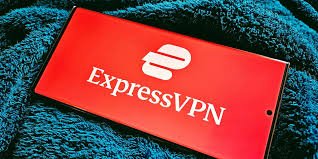In today’s digital-first, attention-fragmented landscape, media coverage is increasingly skewed toward those who can pay for it. From branded content partnerships to influencer collabs and pay-for-play publishing, the media world has never been more monetized. But what happens when your brand wants earned media coverage that isn’t bought, but genuinely deserved?
Earned media may be harder to win, but it’s far more valuable than paid placements. It brings credibility, trust, and third-party validation that no ad spend can match. So, how do you stand out in a pay-to-play ecosystem and still get the attention of editors, journalists, and the public?
Here’s a roadmap to help you earn media honestly, effectively, and strategically.
If you’re searching for a reliable PR company in Delhi, we have the expertise you need. Reach out to us at Twenty7 Inc!
The Media Landscape: What’s Changed?
Before diving into the how, let’s acknowledge the why behind this shift:
-
Shrinking newsrooms mean fewer reporters are doing more work, with less time.
-
Revenue models for media have changed—many publications now rely on branded content or native advertising to survive.
-
PR fatigue is real. Journalists receive hundreds of press releases and pitches daily.
-
Influencer and creator media have blurred the line between editorial and promotional content.
So yes, the game has changed. But it’s not over. There’s still room for real stories, thoughtful pitches, and earned visibility—if you’re willing to rethink your approach.
1. Build Relationships, Not Just Media Lists
The most effective earned media doesn’t come from cold emails—it comes from trust.
-
Follow and engage with target journalists on social platforms (especially Twitter/X and LinkedIn).
-
Read their work regularly—know their beat, tone, and interests.
-
When you pitch, personalize your message based on what they’ve written before.
-
Offer to be a helpful source, even when it doesn’t benefit your brand directly.
Relationships compound over time. When a journalist sees you as a credible, helpful connection, your future pitches are far more likely to land.
2. Tell a Story—Not a Self-Promo
Most media outlets aren’t interested in your product launch or milestone unless it connects to something bigger. To earn coverage, your story must:
-
Tap into a trend or news cycle.
-
Solve a problem or answer a timely question.
-
Inspire or provoke emotion.
-
Offer data, insights, or expert commentary.
Instead of:
“We’ve launched a new AI tool.”
Try:
“Hiring managers are burned out. This startup’s AI tool helps them screen candidates 5x faster—without bias.”
The second example tells a story with context, conflict, and resolution. That’s what journalists want.
3. Create News—Don’t Wait for It
If your brand doesn’t have traditional “news,” create something newsworthy:
-
Commission a study and release interesting findings.
-
Host an industry event or roundtable and invite the press.
-
Offer expert predictions for the year ahead.
-
Issue a bold opinion or thought leadership article.
-
Respond quickly to breaking news in your niche.
Proactively generating news keeps you from relying on big moments (like product launches) and makes your brand consistently relevant.
4. Focus on Data, Insight, and Value
Journalists love:
-
Proprietary data
-
Expert perspectives
-
Contrarian viewpoints
-
Original research
Give them something they can’t easily Google. If your company has unique user behavior data, trend insights, or a pulse on a niche community, turn that into a press hook.
For example:
“Based on 100,000 job postings analyzed this year, here are the top 3 skills employers are quietly dropping.”
That’s not just newsworthy—it’s useful.
Are you seeking a trusted PR company in Bangalore to manage your communications? Reach out to Twenty7 Inc. today!
5. Be Quick, Clear, and Concise in Your Pitch
A good pitch doesn’t bury the lede. Respect a journalist’s time by:
-
Putting the core story in the first sentence
-
Including only relevant details
-
Offering clear next steps (e.g., interview availability)
-
Using a compelling subject line
Also: Avoid attachments and long PDFs. Instead, link to a pressroom or Dropbox folder with visuals and backgrounders.
Remember: The goal of your pitch isn’t to tell the entire story—it’s to get them interested enough to ask for more.
6. Leverage Owned Media to Fuel Earned Media
Sometimes journalists discover you through your owned content:
-
Blog posts
-
LinkedIn articles
-
Podcast interviews
-
Thought leadership pieces
-
Medium essays
These platforms let you build credibility and demonstrate authority. Great owned media makes it easier for a journalist to say, “Yes, I trust this source.”
Tip: If your founder or subject-matter expert is active and articulate online, they become a go-to quote source for media.
7. Align with Journalistic Goals
Always remember: Journalists are not your marketers. Their job is to inform, investigate, and entertain their audience.
So before you hit send on a pitch, ask:
-
Does this benefit their audience, or just our brand?
-
Is this pitch timely and unique?
-
Would I read this story if I didn’t work for the company?
Earned media requires empathy. Put yourself in the journalist’s shoes—and in the reader’s mind.
8. Use Third-Party Validation
Social proof builds trust. If your brand has:
-
Customer testimonials
-
Industry awards
-
Partnerships with well-known entities
-
Impressive investor backing
…then weave that into your pitch subtly. Not as bragging, but as credibility markers that say, “This story matters.”
9. Don’t Skip Local or Niche Media
While everyone wants to land in Forbes or Economic Times, niche and local media are often more accessible—and more impactful for your target market.
-
Regional business outlets
-
Industry-specific trade publications
-
Podcasts with loyal followings
-
LinkedIn newsletters or communities
These platforms often have higher engagement and are hungry for fresh stories.
10. Mix Earned With Shared and Paid—Strategically
Finally, earned media works best when it’s part of a broader ecosystem. After you secure coverage:
-
Share it widely across your social and email channels.
-
Link to it in your blog and pitch decks
-
Repurpose it into quotes, snippets, and credibility statements
And yes, sometimes it’s worth amplifying earned media with paid ads to extend its reach and shelf life.
Earned + Owned + Paid + Shared = Real visibility.
If you’re searching for a reputable PR company in Hyderabad, we’re here to assist! Reach out to us at Twenty7 Inc.
Final Thoughts
In a media world increasingly influenced by money, authentic stories still cut through. Brands that invest in building genuine media relationships, offering value-rich content, and leading with audience relevance will continue to earn trust and headlines.
While pay-to-play will always have a role, earned media is still the gold standard. It requires more effort, but delivers far more credibility.
So ask yourself: Are you selling a product, or telling a story worth spreading?
If it’s the latter, the media will come calling.
Follow these links as well
https://twenty7inc.in/best-pr-agency-in-gurgaon/
https://twenty7inc.in/pr-agency-in-noida/
https://twenty7inc.in/pr-agency-in-chennai
https://twenty7inc.in/pr-agency-in-kolkata





